I have a few additional comments concerning our day in the French Quarter. The first concerns the cemetery which is pretty much Catholic. There was a Protestant section near the back where burials were below ground. This section was mostly given up (bodies moved and re-interred) when the downtown area was further developed but a small section does remain. (I guess that shows how the Protestants ranked in the social order.) To be buried in the Catholic section now you must be able to trace your lineage to a family who already has a spot in the cemetery. We did see a few newer plaques on some of the crypts.
The second comment deals with just being in the South. The first night in New Orleans we ate at an IHop restaurant and I asked the waitress if there was a house specialty among the waffle offerings. Her response was “They’s alllll good, y’all.” Yep…we were in the South!
On to new material.
We had planed to leave New Orleans and head east into Mississippi right away. but Pam found a tourist attraction that sounded like it would be a good stop…Houmas House, a sugar plantation that had origins in the early 1700s. We decided to take the tour and it proved to be a great one.
Before getting into photos and such, a few comments about history. It should be clear by now that both of us have an interest in history and how things got to be the way they are. We learned a lot about the South, particularly Louisiana, that was never covered in our Midwest public education. For example, there were many sugar plantations in the south. (Domino Sugar has a huge plant in Florida, we drove past it.) We usually think of cotton being the major crop, and it was big to be sure, but sugar fueled much of Louisiana’s pre-civil war economy and is still an important cash crop today.
Slavery was common, but we learned there were thousands of free blacks and native (Creole) peoples in Louisiana that worked as field hands, shop keepers, and skilled tradesmen. Women were allowed to own property and many are prominent in the history of New Orleans. Trade was international and sophisticated. This aura of sophistication is not generally the impression one gets from our northern schools, and our visit gave us a new perspective on the culture and social history of the area.
The above photo was taken from the second-floor balcony of the house. Originally the view, and trees, would have extended down to the Mississippi River but the levees, built in the late 1920s, removed many of the oak trees and restricted the river view. Many old mansions, often located on the banks of the Mississippi, were bulldozed during the building of the levees. Of the estimated 1,000 plantations that once existed in Louisiana, only about 30 remain.
After the tour of the house we ate at the on-site restaurant (excellent meal!) and then took a tour of the extensive gardens.
This stop turned out to be a high point of the trip: very informative, beautiful house and gardens, and an excellent restaurant lunch — all enjoyed before we headed off to Mississippi and Alabama. Highly recommended if you ever get in the area even if you are not into the historical aspects as the tour, gardens, and restaurant are all worth a visit. Future expansions of Houmas House will include reconstructed slave quarters and a steamboat museum. If you are interested in more information about this place visit their web site at http://houmashouse.com
It was just as well we were not on a tight schedule, but we did have to begin heading east toward the Florida Panhandle. Heading north from Houmas House to Baton Rouge, we then caught the interstate east. After a time, Pam, navigator for the entire trip, noticed a small road on the map that closely followed the Gulf coast. We decided to take this more scenic route and that’s how we ended up making our first beach stop of the trip, in Long Beach, Mississippi.
The beach was amazing. White sand, clear 79 degree water, air temperature in the mid-80s, and ocean views to the horizon. Benches near the road gave us a place to sit and take off our shoes, which we then left near the benches (a practice we found to be quite common on all the beaches we visited).
This was our first beach stop and we regard it as a high point. It was great to get out of the car, walk the beach, and just enjoy being in the moment.
As you can see from the shadows it was getting on in the afternoon, so we had to head off and find a place to stay for the night. Between Houmas House and the beach stop it had been a very, very good day, just what we had hoped to get when planning this adventure. Topping off the day, we spent the night in Foley, Alabama at a newly remodeled EconoLodge (best motel of the entire trip), ready to pass through Gulf Shores, AL the next morning.
Next time: Ft. Walton Beach (lunch at The Crab Trap) and on to Orlando to visit Mary and Jeff.
That’s it for now. Thanks for looking in!
Pam’s Two Cents Worth:
My local library will be locating a specific historical book for me to read with info on the Mississippi delta – this particular title was recommended by Susan, our carriage guide in New Orleans. It’s obvious there are big gaps in my grasp of Southern history, much of which was taken from Margaret Mitchell. The cotton fields of the fictional Tara are apparently a whole different ball game from the sugar plantations in Louisiana.
Happy Trails.

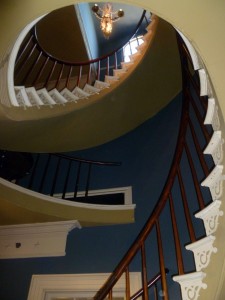
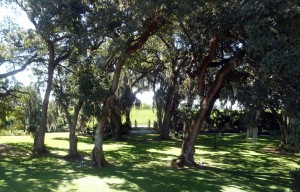

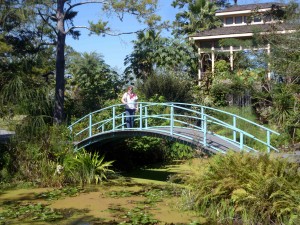
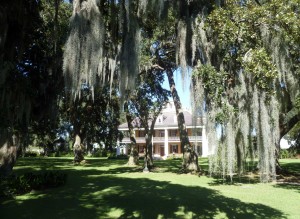
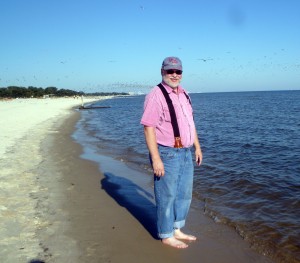
“History written by the victors”…
Often falls short — normally, everything not within the victor’s fantasies is eliminated…
Midwestern US History books tend to homogenize the South, skimming over facts.
Louisiana and a large portion of Mississippi was settled by the French, a very much Catholic nation (at the time).
And, Florida was settled by the Spanish, rather than wealthy, retired Jews from New York & ‘Jersey…
Also Catholic, accepting escaped slaves, and freeing them while converting them to Catholicism.
(Our) US History was mostly written by exiles from the early religious colonies (for not being “religious enough”), and by the 25% of Anti-British colonists of the time (rather than an equal number of Pro-British, and the large majority which just didn’t care!)…
The Plantation — no doubt you could imagine back to the time just after it was built, and the enormous amount of manual labor needed to maintain the place after the huge expense of clearing the land and building it in the first place…
ahhh
love the beach pic!
i think your comments about history being swayed a bit are very interesting…i used to read a blog about a woman who studied native americans and how inaccurate that historical portrayal is (not a surprise) but i think it’s a shame we are teaching our children lies…or at the least–biased versions of the truth
as a little girl i dreamed of spiral staircases–so love that pic!!
btw–happy belated anniversary!!!